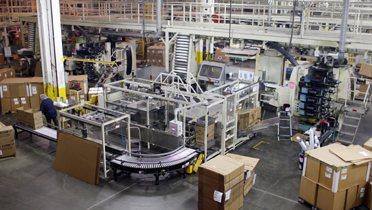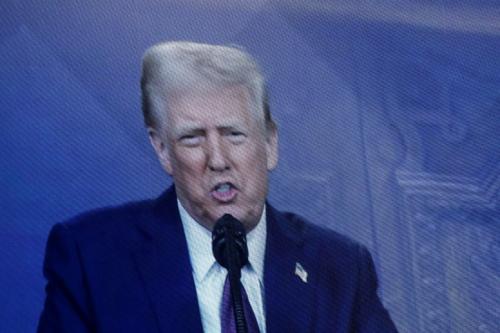Most mainstream commentators share a short lineup of suspects when they discuss the decline of American manufacturing. Popular culprits range from automation to skills shortages to offshoring. Yet public enemy number one has increasingly become China. According to the conventional wisdom, rampant exchange rate manipulation, intellectual property theft, and low labor costs have together created a boon for Chinese manufacturers at the expense of U.S. jobs. And with last year’s manufacturing trade deficit with China reaching $318 billion, the conventional wisdom seems pretty persuasive.
Yet the conventional wisdom relies on conventional trade statistics, which may not actually reflect our competitive position. In fact, newer analyses of better trade data increasingly suggest China may not be our greatest competitive worry. How’s that? Well, for several years now a number of economists have criticized traditionally reported trade statistics that simply report gross imports and exports. These economists argue that a better metric is the actual value a given country adds to a particular traded product or service. Based on this new method of trade accounting, China looks less formidable.
The commonly reported trade balance between two countries—which simply adds up the value of all final products exported minus those imported—was developed in an era when most of the inputs into a product were sourced domestically in the manufacturing nation. However, with the rapid globalization of manufacturing value chains few countries today are actually responsible for every piece of any “final product.” And yet, countries that assemble final products from an array of imported components still see their trade surplus numbers increase by the full value of the end product—even though the country’s real contribution is no more than the cost of assembly.
The distortions in the case of China and other developing nations that specialize in assembly are severe. In fact, measured by value-added instead of trade in final products the U.S. trade deficit with China declines by over one-third. On the other hand, our trade deficit increases substantially with regard to high wage countries such as Germany, the Netherlands, and Singapore and actually doubles in countries like South Korea and Japans.
To be fair, our trade deficit with China dwarfs our deficits with other nations by either accounting. Nevertheless, the more accurate statistics highlight two points: first, that China is churning out a lot of low-value assembly that doesn’t really challenge America’s advantages in high-value production; and second, that a number of other high income countries continue to outperform the United States in advanced manufacturing.
Pressuring China to appreciate the Renminbi and enforce intellectual property laws might help U.S. manufacturing some but could miss the nation’s deeper need. If our real competition comes from high-wage countries that are outperforming the United States in advanced production, then we need to get serious about the types of strategies—investing in R&D, designing great worker training systems, and building strong regional manufacturing ecosystems—that will help us compete better with those countries. And maybe we should spend less time worrying about the low-value work going on in assembly plants in China.
The Brookings Institution is committed to quality, independence, and impact.
We are supported by a diverse array of funders. In line with our values and policies, each Brookings publication represents the sole views of its author(s).









Commentary
China: A Manufactured Chimera? Part One
May 21, 2014